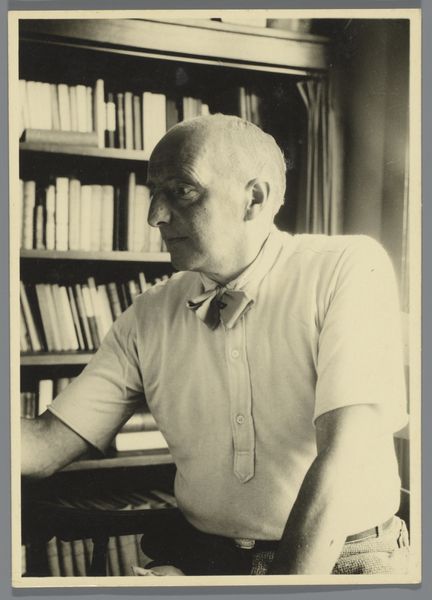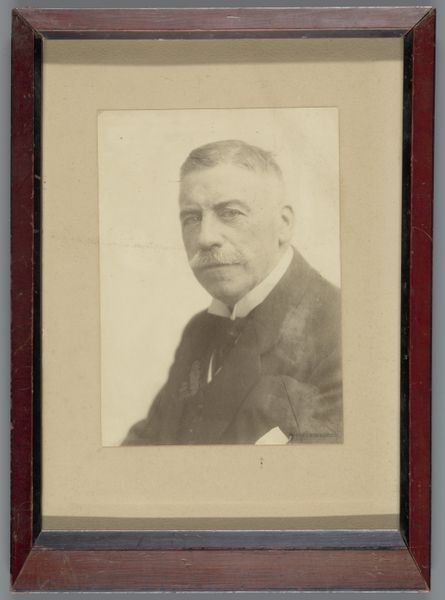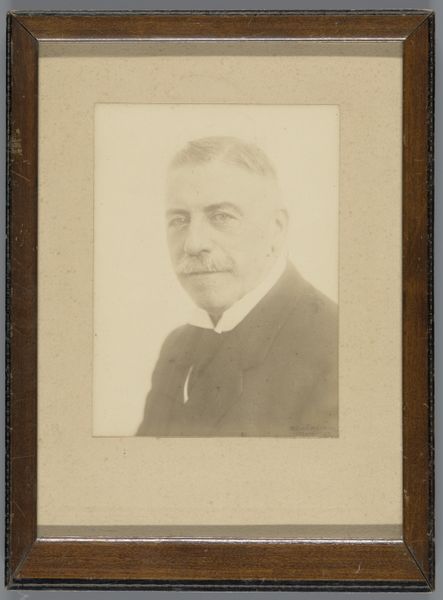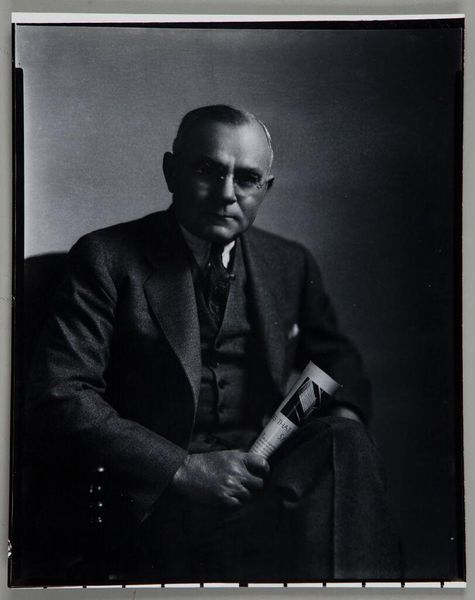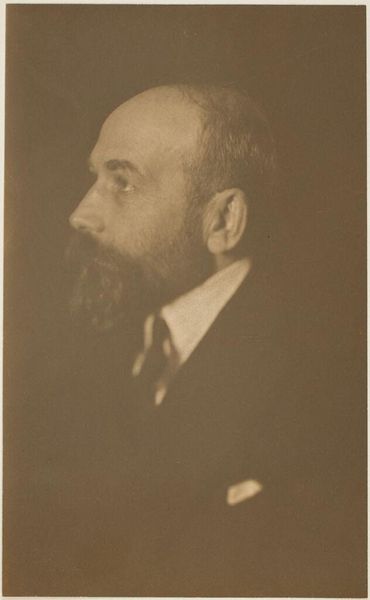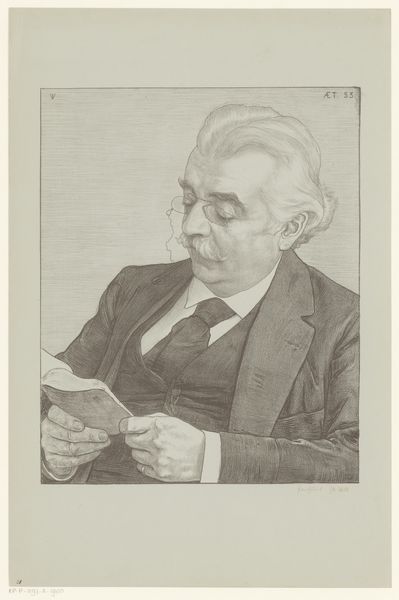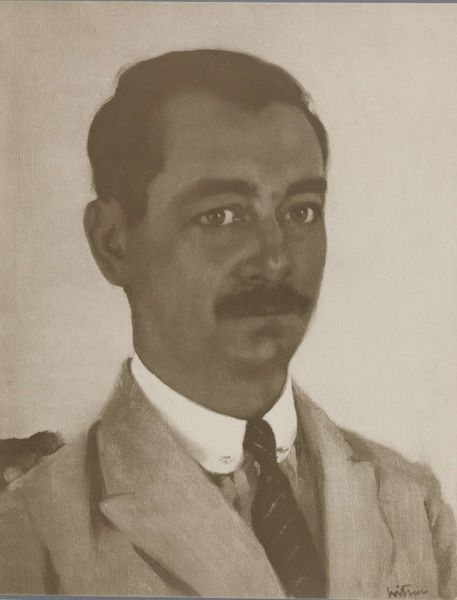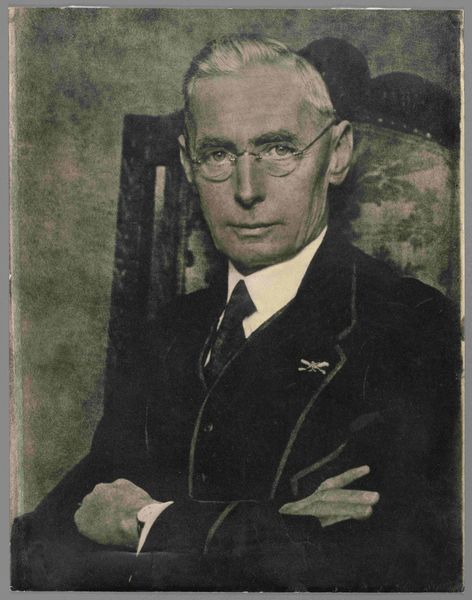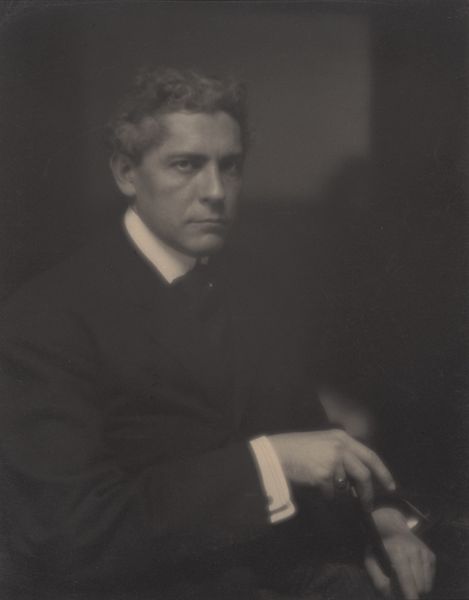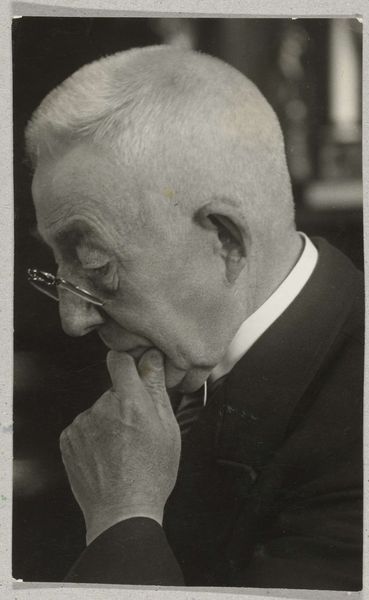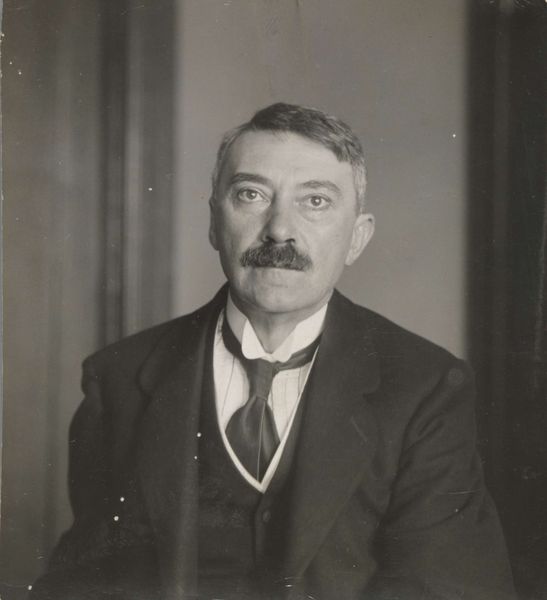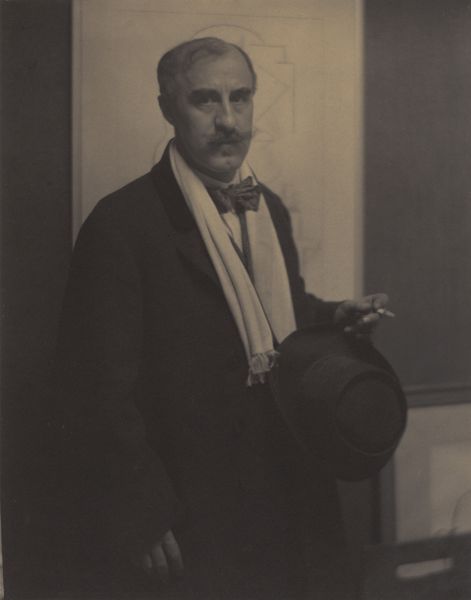
photography
#
portrait
#
pictorialism
#
photography
#
modernism
Dimensions: image: 24.4 x 19.4 cm (9 5/8 x 7 5/8 in.) sheet: 25.3 x 20.2 cm (9 15/16 x 7 15/16 in.)
Copyright: National Gallery of Art: CC0 1.0
Curator: This is a portrait of Charles H. Caffin by Alfred Stieglitz, created around 1915. A striking example of pictorialist photography, wouldn’t you agree? Editor: It's…brooding. The subdued tones and soft focus give it a melancholic feel. There's a starkness, even in its intimacy. Curator: Stieglitz certainly had a knack for capturing the psychological essence of his subjects. Charles Caffin was an influential art critic, advocating for modernism in America. His writings helped shape the reception of now-canonical figures in the US like the artists within Stieglitz's own circle. Editor: Interesting how his legacy became interwoven with the very movement he championed. Considering his influence on public perception, I wonder, did Caffin actively consider the gender and racial politics within early modernist circles? Were those voices centered in the movement’s trajectory? Curator: That's a fair question, one that sheds light on the exclusionary practices within the modernist movement itself. While Caffin championed the avant-garde, it’s crucial to consider whose voices were amplified and whose were marginalized. It points to the critical need for a more inclusive art historical narrative. Editor: Absolutely. Looking at the photograph again, I find it impossible not to think about the power dynamics at play—the photographer's gaze, the critic's role, and the art world's selective embrace of certain narratives over others. The lack of diversity is still visible within our own modern structures of power, museums, galleries and education centers, no? Curator: The monochromatic palette and diffused light create a sense of introspection and dignity, appropriate given Caffin’s standing. The soft focus of Stieglitz's lens almost renders Caffin statuesque and elevated. But you’re right. While beautiful, these aesthetic choices can inadvertently veil underlying power structures. Editor: It reminds us that even within seemingly progressive movements, there's a responsibility to examine who truly benefits. And to make sure these images and this canon are reflective of everyone, not just a select few. Curator: Well, engaging with this portrait and considering these points adds layers of understanding, underscoring art’s role in revealing our history. Editor: And prompting vital conversations about how that history impacts our present and shapes our future in inclusive and accessible ways.
Comments
No comments
Be the first to comment and join the conversation on the ultimate creative platform.

